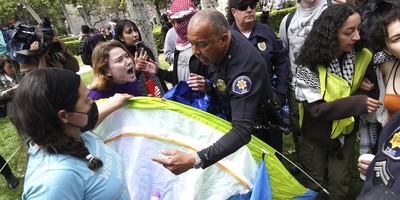It’s early December, which in our home means putting up the Christmas tree, white outdoor Christmas lights and pulling out our favorite holiday movies. Inevitably, every year we watch “Rudolph, the Red-Nosed Reindeer” and “White Christmas.” However, my favorite Christmas movie is Frank Capra’s “It’s a Wonderful Life.”
The story begins on Christmas Eve, 1946. Faced with hard times, George Bailey (played by Jimmy Stewart) stands on a bridge overlooking an icy river and contemplates suicide. But when he sees a person in the water struggling to swim, George’s focus on his own life is replaced by his concern and action to save another’s. He jumps into the river, saving the life of what turns out to be an angel, second class, Clarence Odbody.
Clarence’s mission on Earth, (which will lead to him getting his wings if he is successful) is to turn George’s life around, leaving him once more in good cheer. Clarence does this by leading George through a historical journey of the impact his life has had: saving his brother’s life (Harry later becomes a war hero and saves other’s lives), stopping his boss Mr. Gower the druggist from dispensing the wrong medicine and poisoning a child, marrying Mary who would have otherwise become an “old maid,” saving Bailey Building & Loan Association with his honeymoon money during a run on the bank (saving the homes and affecting the lives of the townspeople), starting Bailey Park (affordable housing), as well as fathering two children.
George was contemplating suicide because the Bailey Building & Loan was to be closed due to a misplaced bank deposit. He had tried to borrow from Mr. Potter – the cantankerous Scrooge-like character in the story -- but was turned down.
Clarence’s journey through George’s life shifts George’s perspective from monetary problems to the positive effect he has had on others. George realizes that he does want to live and that he has a wonderful live, no matter the money difficulties. Racing home to his family, he finds friends there who have gathered the necessary funds for the deposit – thereby saving the bank.
Recommended
In the end, all turns out well. As George’s family and friends gather around him, a bell on the Christmas tree rings, signaling that Clarence earned his wings.
Many of us might feel a bit like George Bailey this year, financially strapped and not sure how we will make it through the tough times. This often leads to desperate thoughts and can affect our entire outlook on life. A reframing of our thoughts away from monetary and economic matters might help remind us as well that there is much good in life and much to be happy about.
While some might view happiness as a luxury, Arthur Brooks in “Gross National Happiness” (Basic Books, New York, New York, 2008) argues that individual happiness is important because happiness affects other people. Happier people tend to be more charitable, “have better marriages, are better parents, act with greater integrity, and are better citizens. Happy people not only work harder than unhappy people, but volunteer more, too – meaning they increase out nation’s prosperity and strengthen communities. In short, happy citizens are better citizens.”
What makes us happy? Giving to others -- through time, money and talent – tend to make us happier. Possibly, Brooks notes, it is due to an increased feeling of control, a change of focus from our problems to helping others with theirs, or the now-proven release of endorphins (natural opiates) that leads to a “Helper’s High.”
George Bailey’s story unfolds in the small town of Bedford Falls. For those of us who live in large cities, it is up to us to help create and participate in communities and associations. These volunteer associations, about half of which are worship-related, provide a way for us to give to others as well as to create social networks that add meaning and context to our everyday lives.
This Christmas season, with so many in need, try focusing on helping others out of the icy waters, and you might not notice that you are a bit cold yourself. If Brooks is right, giving to others will lead to an increase in your happiness, increasing your ability work harder, be a better parent, have a better marriage and become a better citizen.
Most importantly, possibly, like George, you may just conclude that it is still a wonderful life.
























Join the conversation as a VIP Member